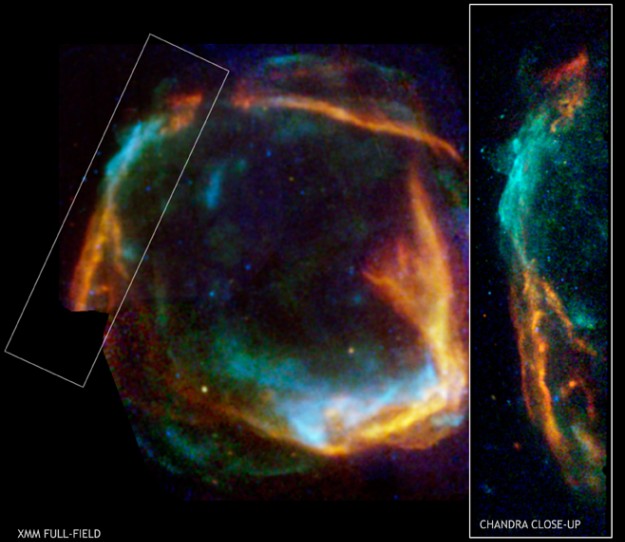Explanation: In 185 AD, Chinese astronomers recorded the appearance of a new star in the Nanmen asterism - a part of the sky identified with Alpha and Beta Centauri on modern star charts. The new star was visible for months and is thought to be the earliest recorded supernova. Data from two orbiting X-ray telescopes of the 21st century, XMM-Newton and Chandra, now offer evidence that supernova remnant RCW 86 is indeed the debris from that stellar explosion. Their composite, false-color view of RCW 86 shows the expanding shell of material glowing in x-rays with high, medium, and low energies shown in blue, green, and red hues. Shock velocities measured in the x-ray emitting shell and an estimated radius of about 50 light-years can be used to find the apparent age of the remnant. The results indicate that light from the initial explosion could well have first reached planet Earth in 185 AD. Near the plane of our Milky Way Galaxy, RCW 86 is about 8,200 light-years away.
1999 2000 2001 2002 2003 2004 2005 2006 2007 2008 2009 2010 2011 2012 2013 2014 2015 2016 2017 2018 2019 2020 2021 2022 2023 2024 2025 |
Yanvar' Fevral' Mart Aprel' Mai Iyun' Iyul' Avgust Sentyabr' Oktyabr' Noyabr' Dekabr' |
NASA Web Site Statements, Warnings, and Disclaimers
NASA Official: Jay Norris. Specific rights apply.
A service of: LHEA at NASA / GSFC
& Michigan Tech. U.
|
Publikacii s klyuchevymi slovami:
supernova - supernova remnant - SN 185 - vzryvy sverhnovyh - ostatok Sverhnovoi
Publikacii so slovami: supernova - supernova remnant - SN 185 - vzryvy sverhnovyh - ostatok Sverhnovoi | |
Sm. takzhe:
Vse publikacii na tu zhe temu >> | |
